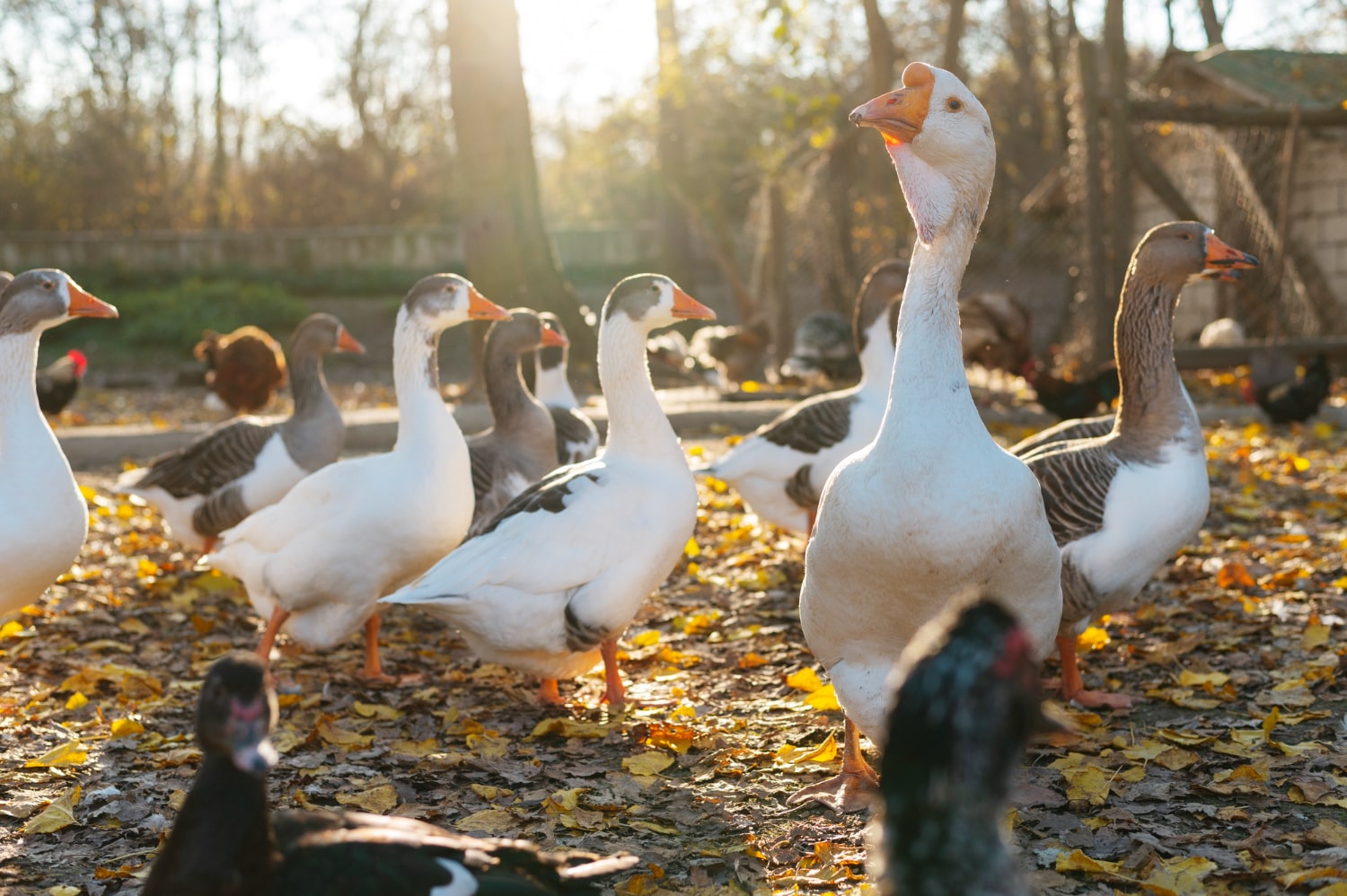Geese are not just common domestic birds found on farms or in rural areas. These birds have been closely connected with humans for centuries and are known for their intelligence, loyalty, and remarkable biological traits. Geese form complex social structures, migrate over long distances, and play an important role in both cultural traditions and natural ecosystems. Their behavior and abilities are often underestimated, yet they reveal a fascinating and rich world. Below are some interesting facts about geese that you may not have known before.
- Geese form lifelong monogamous pairs and are extremely loyal to their partners. If one partner dies, the other may grieve for a long time and often refuses to form a new bond. Such loyalty is rarely observed in the animal kingdom.
- While flying, geese arrange themselves in a characteristic V-shaped formation that helps conserve energy. This pattern reduces air resistance and allows the flock to fly farther with less effort. The lead position is regularly rotated to share the workload evenly.
- During migration, geese can travel thousands of kilometers. Some species fly over the Himalayas, reaching altitudes of more than 8000 meters. Their respiratory system is adapted to low oxygen levels at high altitudes.
- Geese have excellent memories and can recognize people they have interacted with before. There are documented cases of geese remembering their caretakers even after several years apart. They are capable of distinguishing faces, voices, and even smells.
- In ancient Rome, geese were considered sacred animals. According to legend, they saved the city by sounding the alarm during a nighttime attack by the Gauls. Since then, they were kept at temples and used as living alarm systems.
- Geese are very vocal birds that use a wide range of sounds to communicate. They honk, hiss, grunt, and issue warning calls when danger is near. Each goose has a unique voice that allows others in the group to recognize it.
- These birds can be aggressive and courageous when defending their young or territory. They are capable of chasing off predators or strangers much larger than themselves. Some farmers even use geese as guards instead of dogs.
- Geese have excellent vision and can distinguish colors. This helps them navigate their environment and find food efficiently. They also remember migration routes and nesting sites very well.
- Goose nests are carefully constructed using grass, reeds, and the bird’s own down. The female usually lays between 4 and 10 eggs and incubates them for about a month. During this time, the male stays nearby and protects the territory.
- Goslings hatch with their eyes open and are covered in down, allowing them to follow their mother almost immediately. From an early age, they learn to navigate, find food, and avoid threats. This gives them a high survival rate in the wild.
- Some goose species can live for over 20 years, especially when kept in safe, controlled environments. In the wild, their lifespan is typically shorter due to predators and environmental challenges. Nonetheless, geese are among the longer-living medium-sized birds.
- Geese play a significant role in the culture and economy of many countries. They are raised for their meat, eggs, down, and feathers. Goose liver is a famous delicacy, while their down is prized for its excellent insulating properties.
- Unlike many other birds, geese can learn and solve simple problems. In experiments, they have demonstrated logical thinking by choosing better routes or using objects to achieve a goal. This makes them some of the most intelligent farm birds.
- There are over 30 species of geese in the world, differing in size, coloration, and behavior. Among the most well-known are the greylag goose, snow goose, Canada goose, and red-breasted goose. Most species are well adapted to both land and water environments.
- Geese molt once a year, shedding old feathers and growing new ones. During molting, they temporarily lose their ability to fly and become more vulnerable to predators. This process usually occurs after the breeding season.
- In many countries, ornithologists study geese as indicators of environmental health. Their numbers, migration patterns, and behaviors help track climate change and ecological shifts. Geese are an essential part of global bird monitoring efforts.
Geese are not just ordinary farm birds, but intelligent, organized, and incredibly fascinating creatures. These amazing facts reveal how complex and diverse their world truly is. You may not have known that geese are capable of loyalty, bravery, and strategic thinking. Observing them offers both enjoyment and a deeper appreciation for the wonders of nature.





